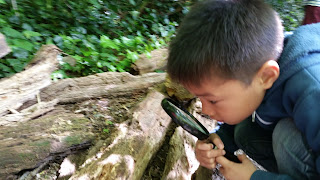Frienships start with a simple "Hello"

In this part of the inquiry the children were drawn to a story about a Boy and a stray puppy who developed friendship as they go through the feelings of sadness, loneliness and in search of a friend. The story lines were catchy and simple enough that children repeatedly said the lines over and over again in their play. "......sad, ... no fun....all alone....why am I the only one?" They were so attuned to the sadness of the characters that they even created their own dramatic play on the ideas of feeling alone and what to do when no one wants to play with you. The story "Say Hello" by Jack and Michael Foreman explores the concepts of care, inclusion and open-mindedness. At the end of the story both the boy and the dog were connected by acknowledging the presence of the other through a simple "hello". It shows us that a warm greeting and a smile is all it takes for friendships to flourish. Christina asked: " How do you






